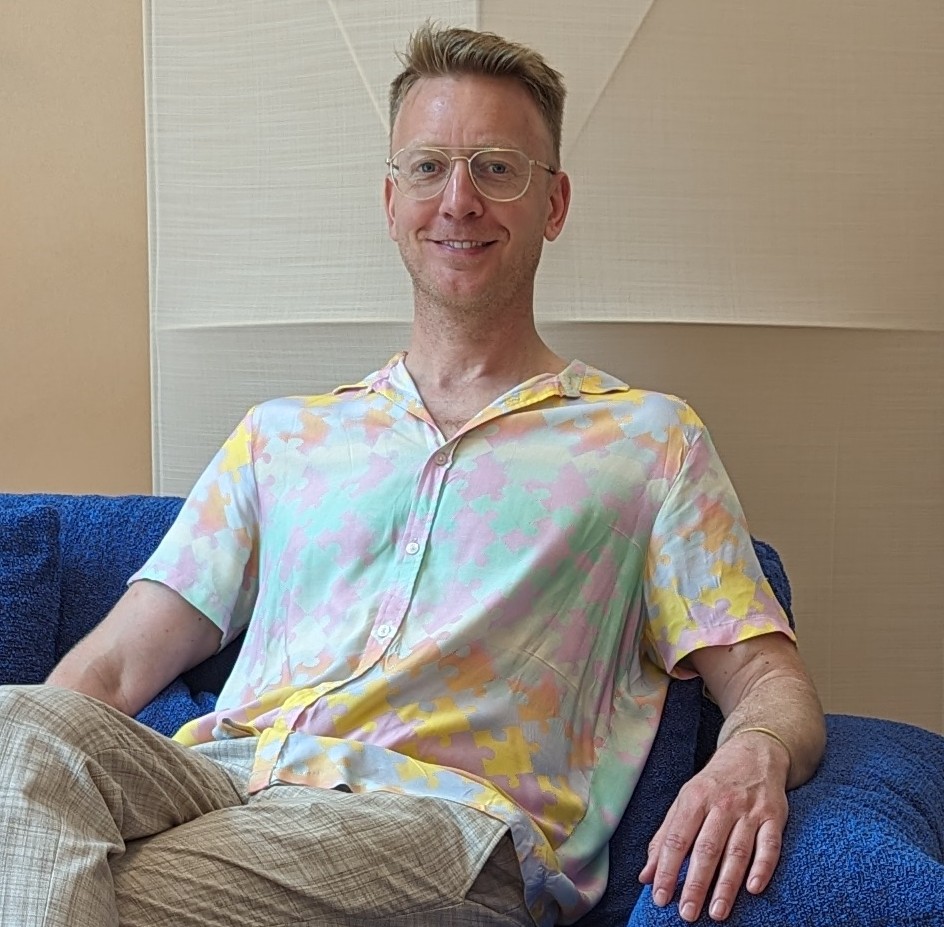Layered Lives: 'I Want to Come Home to Good Vibes' – Justina Blakeney Knows How to Create Mood-Boosting Decor That Feels as Joyful as It Looks
In our series Layered Lives, we get to know the designer behind her personality and color-filled spaces, finding out more about Justina's very soulful, personal approach to interior design
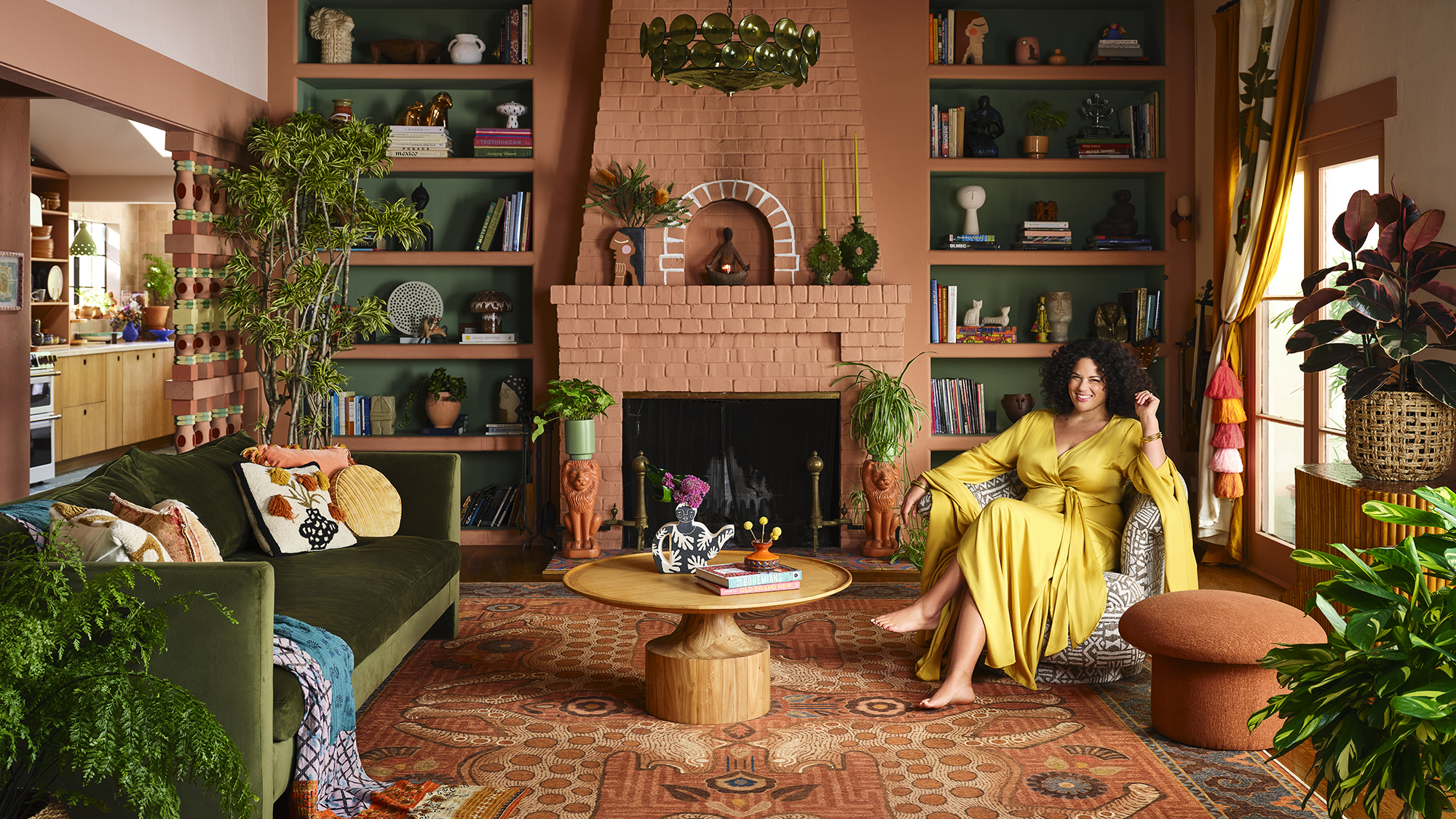
You can often spot a designer’s signature style from across a room – a recurring palette, a favorite shape, a certain restraint or flourish. But with Justina Blakeney, what stands out isn’t a single look, but a feeling: one of warmth, joy, and unfiltered self-expression. Her spaces are layered with pattern and plants, saturated color and meaningful objects – each one telling a story that’s as personal as it is exuberant.
The creator of the much-loved Jungalow aesthetic, Justina has built a design language that celebrates heritage, nature, and individuality – homes that feel not just lived in, but loved in.
It’s an interior design style that feels deeply human in an era of Instagram-level perfection. ‘I put so much of myself into my work,’ Justina says. ‘My heritage, my travels, my ancestors – all of it shows up.’
In this conversation with Homes & Gardens for our series Layered Lives, she opens up about the roots of her creativity, the cultures that shape her aesthetic, how home connects to healing, and why she still believes that the boldest spaces are the ones that speak from the heart.
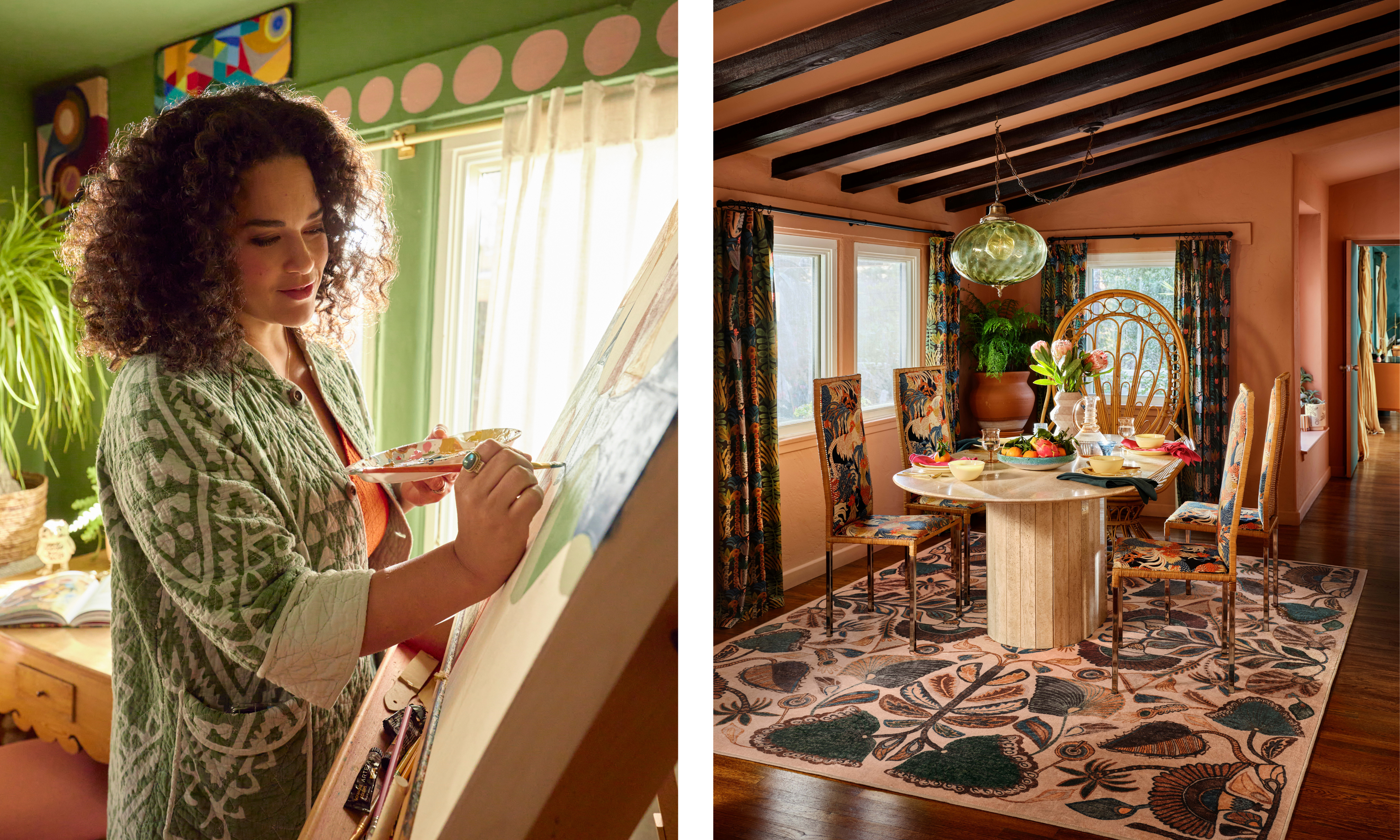
Justina's Ruggable collection puts her color rich, playful patterns on rugs, doormats and throw pillows
Homes & Gardens: Where did your journey with design begin?
‘In my early 20s, I was trying to figure out how to hustle, and I taught myself how to do lots of things. I was freelancing, styling for magazines, writing for magazines, ghostwriting for blogs, and doing anything that was paid. Through that, I got good at graphic design and made connections with writers and editors at magazines, so that when I had a cool project to share, I was able to reach out to them and have them feature my work. I wasn’t planning on any of this!’
Homes & Gardens: What is the key thing inspiring your designs right now?
‘Painting has been lighting me up. Baya is an Algerian artist from the mid-twentieth century who inspired Picasso and Matisse, yet isn't as well known herself. She was a 16-year-old orphan who was adopted by a woman in Paris, and I am mesmerized by her use of color and pattern, and form. And on a more philosophical level, I am reading a lot of Alan Watts, whose work is informing my writing, my painting, and my design work. He is giving me new ways of thinking.’
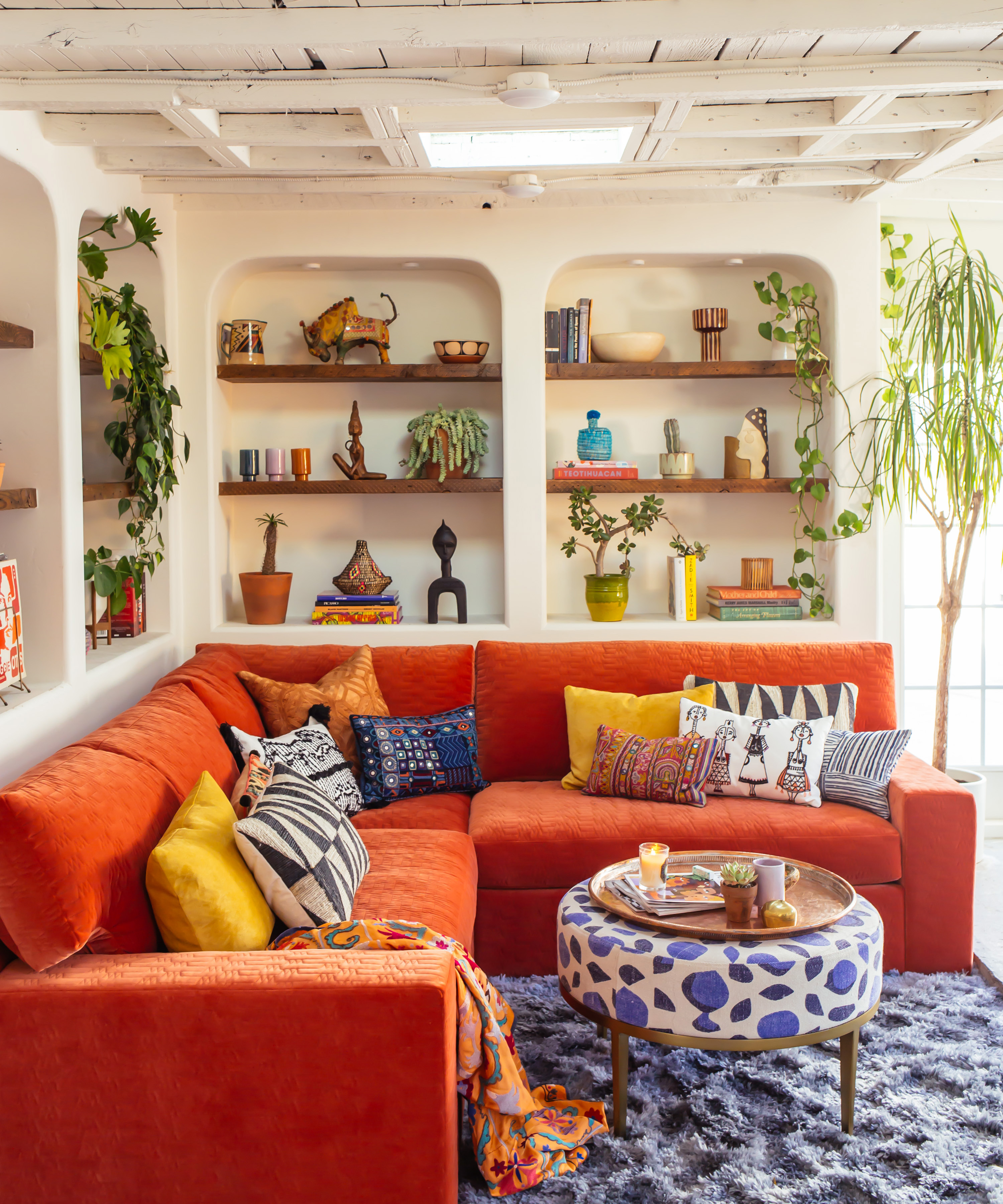
Homes & Gardens: Why do you think your design sensibility resonates so strongly with people as it does?
‘It has to do with authenticity, and because I put so much of myself into my work. It's not just my personality, but my heritage and ancestors and my travels – all these influences end up in what I create. And when you feel authenticity through someone's work, then it compels you to want to know more.’
Homes & Gardens: How does your heritage affect how you think about yourself?
‘I’m biracial in America, and because I grew up not knowing where I fit, I had to work on myself to feel like I actually did fit in. So through that process, I’ve really managed to get to know myself – who I am, what I like, and what I stand for. My heritage is Black and Jewish, and there are not so many of us in the US. It’s me, Lenny Kravitz, and Lisa Bonet – and that’s about it! Then I went on vacation to Morocco and I saw those heritages reflected me – it felt like a really wonderful mix that I could finally begin to understand.’
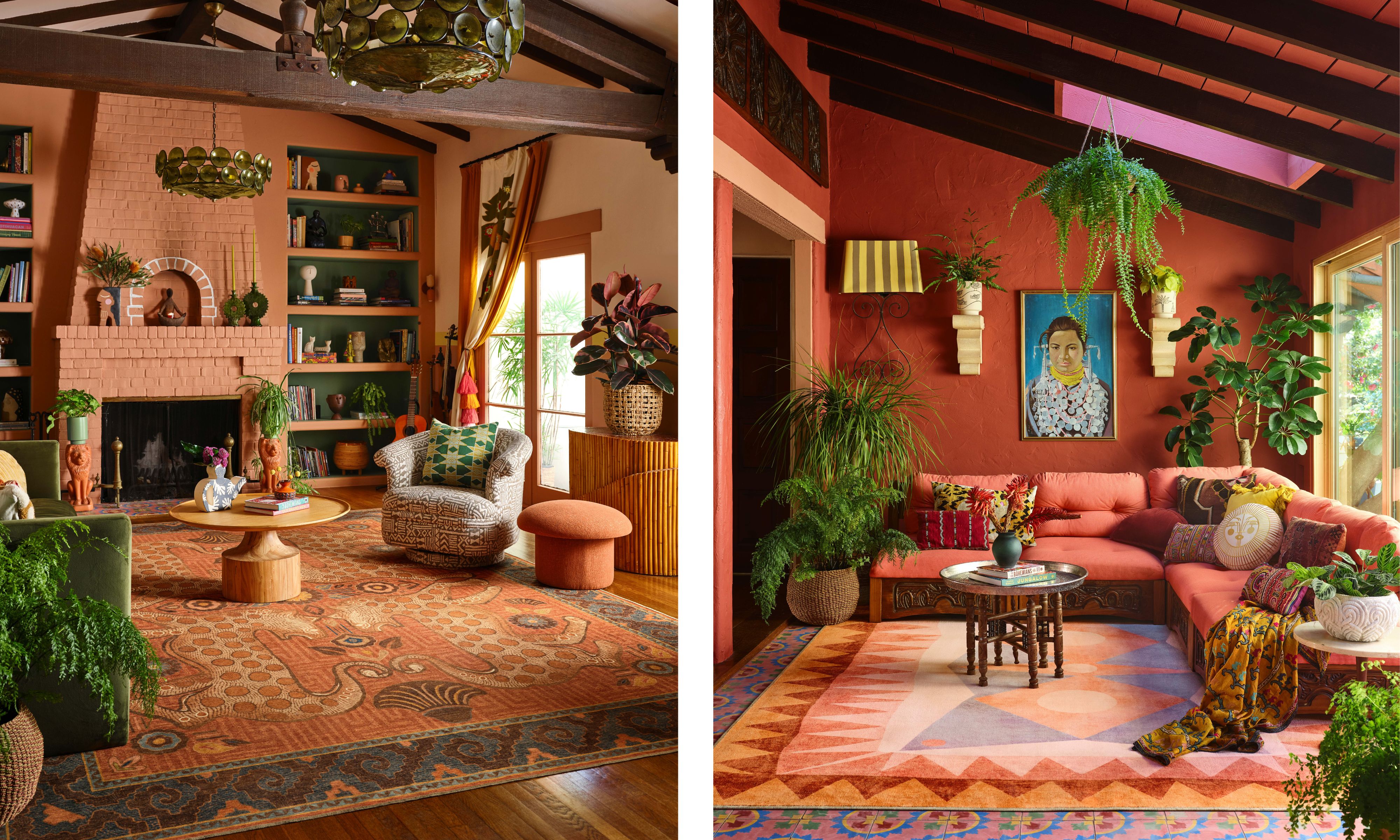
Above are two rugs from Justina's collaboration, the Eartha Terracotta Rug (left) and the Hilma Sunset Rug (right)
Homes & Gardens: So did Morocco shape your sense of design?
‘Yes. In fact, I'd say Morocco was life-changing. I went there when I was 21, and the design I encountered there spoke to me on a visceral level. It felt like I'd been there before. Previously, I didn’t know anything about Moroccan design, but being there – seeing the souks, the ceramics, the yarn – it all really spoke to my soul, in a way that American design never had. The colors were so saturated, and the indoor–outdoor way of life with the riads and their central courtyards was really inspiring.’
Homes & Gardens: You talk about having a culturally blended family – was that realization what came alive to you in Morocco?
‘For sure. Being both Black and Jewish is not an aesthetic orientation but a deeply cultural and spiritual one. Those heritages inform how I was raised – tradition is strong on both sides. By combining those two cultures, we were forced to create our own traditions, and our Thanksgiving meals were a reflection of that.'
'My mom wanted to do matzo balls and collard greens. So you could say I grew up mixing unusual things, and that was what I saw in Morocco too – bright blues with terracottas, those patterned tiles. Because of my upbringing, I was never afraid to say that one thing could go with another, and because I want my work to be a reflection of myself, they tend to have some choices in them that more traditional designers wouldn't make.’
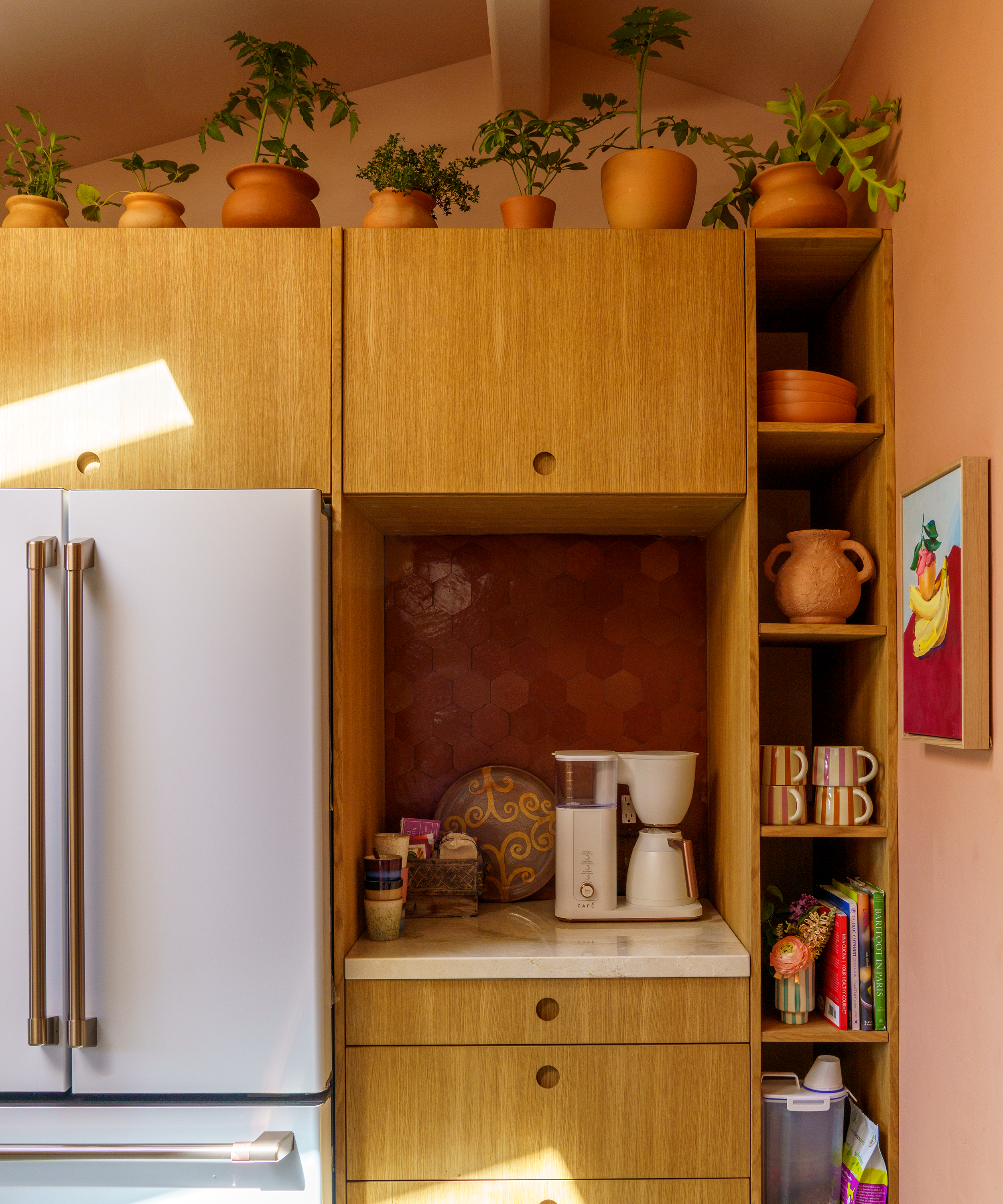
Homes & Gardens: Being a reflection of yourself, how would you describe your style?
‘I identify as an artist, not a designer, and my work is about bringing out what’s inside me. I am modernist and I love modernism, and I love creating spaces and making them beautiful and transporting people so that they think about their surroundings in a new way.’
Homes & Gardens: How does your own home transport you? And what does “home” mean to you?
‘This year has been so crazy. I live in Altadena, and after the wildfires, I was displaced for eight months. It was a devastating situation and gave me a whole new feeling about what home means.'
'Being displaced and house-hopping and not having a place to come back home to was rough. Thankfully my house wasn't burned down, but we had to get all new furniture because of the smoke damage, and we couldn't be here while the house was repaired.'
'It made me realize that home is homeostasis, and that idea kept on coming to me. I could feel myself wanting to come home to myself – to my place of safety and connection and creativity. I was in fight or flight mode, and once I got home and felt safe, my whole nervous system was recalibrating.’
Homes & Gardens: While rebuilding your home, have you felt that the space can hold energy or memory?
‘Yes, I believe so – everything has energy. It’s the way that energies interact and bounce off each other and resonate or deflect that is so fascinating to me. My second book's subtitle was “Come home to good vibes,” and I think a lot about good vibes, and what you can do to create them.'
'It doesn't have much to do with the stuff in your home – although don’t get me wrong, the stuff is fun, the garnish – but when you come home and get the feeling of being protected and safe, when you can exhale and feel like you can be yourself, then you know you’ve got a home with good energy.’
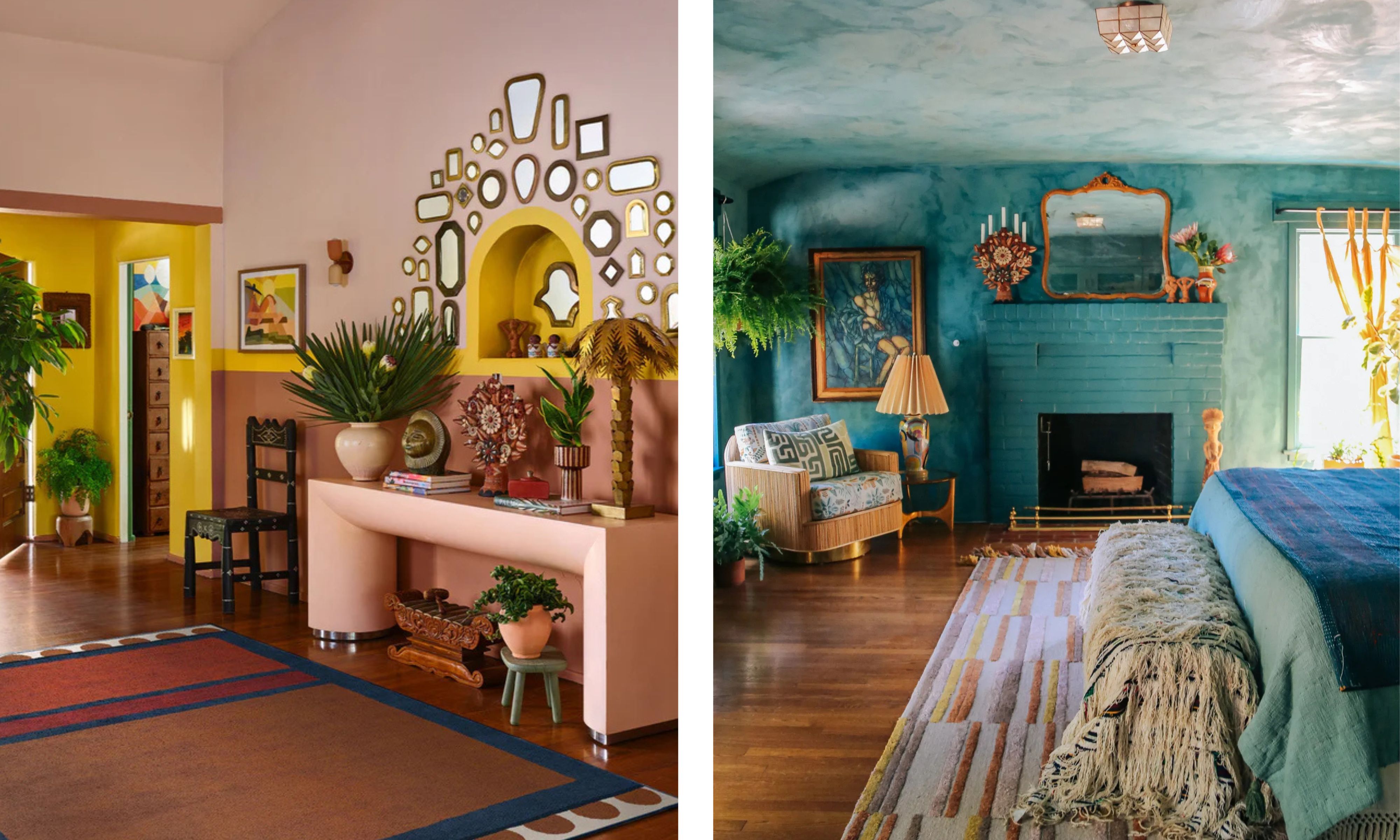
Homes & Gardens: How has your style changed over the years?
'I've started using darker purples like mauve and eggplant, with warmer pops of crimson. And I've been leaning into greens, teals, and peaches. These tones add a sophistication I was ready for, and those darker colors – particularly the eggplant – ground the brighter shades I've always used. I've noticed that I'm craving this moodiness now.'
Homes & Gardens: And you’ve always championed maximalism and personality. Has your idea of ‘more is more’ changed as your career has grown?
‘Yes, this is part of how I am – I am attracted to homes that tell the story of how people live, and that is how I think of my own home and aesthetic. But now I'm leaning a little bit more into houseplants. It’s my age – I'm 46 – and have a bit more bandwidth now that my kid is older to actually care for them instead of just finding some cute ones for a shoot and then sadly neglecting them until they die.’
Homes & Gardens: Have houseplants become part of your daily ritual?
‘Yes, hugely. I like to spend up to an hour a day tending to my garden, making my plants thrive. It's a new experience, but there is a power and a beauty in making them live and flourish. I find it all very nourishing. I get excited about misting them and seeing new leaves, and the experience of watching them grow is similar to the way a house can become a home. Because a home is never finished – it’s always evolving and growing, just like a plant, if you treat it well.’
Homes & Gardens: What advice would you pass on to young or new designers?
'Younger designers – and in fact most people – have a tendency to get in their heads. They tend to want to plan things out perfectly before they take a dive. But in my experience – and this is the piece of advice I'd always give young designers – action is a quicker way to learn than trying to map things out.'
'If you find yourself in that mode of ruminating, of trying to cross every single "t" and dot every single "i," then just know that you’re probably going to undo that stuff you’re planning when you get round to the doing of it anyway. So, take a leap of faith, try things, and see what works for you – this has always worked better for me.'
Layered Lives is Homes & Gardens’ in-depth interview series with iconic creatives, where conversations delve far beyond the surface. We explore the memories, possessions, and passions that shape their aesthetic – revealing the personal stories and experiences that inform their work. Each feature is a richly layered portrait of life as well as design, offering you a glimpse into the minds and lives of the people behind the rooms we admire.
Pip Rich is an interiors journalist and editor with 20 years' experience, having written for all of the UK's biggest titles. Most recently, he was the Global Editor in Chief of our sister brand, Livingetc, where he now continues in a consulting role as Executive Editor. Before that, he was acting editor of Homes & Gardens, and has held staff positions at Sunday Times Style, ELLE Decoration, Red and Grazia. He has written three books – his most recent, A New Leaf, looked at the homes of architects who had decorated with house plants. Over his career, he has interviewed pretty much every interior designer working today, soaking up their knowledge and wisdom so as to become an expert himself.
You must confirm your public display name before commenting
Please logout and then login again, you will then be prompted to enter your display name.

